
Blind chance led me to the experience that will define my travels through New Zealand. Driving south from the geothermal region of Rotorua, Jeannie and I arrived in the lake town of Taupo. Nestled beside the largest fresh water lake in the Southern Hemisphere (the lake is of the same name), Taupo is a small town that exists primarily as a launching point for all things hair-raising. New Zealanders have an addiction to adventure and the outdoors, and they have capitalized on a brilliant combination of the two with a burgeoning tourism industry. Anything you can imagine that will give you a legal high can be found in Taupo—skydiving, luging, jetboating, rafting, bungee jumping, canyoning, even zorbing and shweebing (you’ll have to look those up). While all of these are sure to induce an adrenaline rush worth the cost of admission, I was told the most thrilling endeavor in Taupo is the Tongariro Alpine Crossing.
Regarded in New Zealand as the most epic single-day trek, the Tongariro Crossing is an 18km hike across the Mangatepopo Valley and the South Crater between the Ngauruhoe and Tongariro Mountains. During the winter months (of which we are settled deep into right now) the Crossing is not permissible without a guide. Because the trek is through New Zealand’s most treasured National Park (Tongariro is revered by Kiwis in the same way we admire Yellowstone), they are able to regulate who enters and exits the trailhead. The Crossing is apt to sudden changes in weather that can disorient even the most experienced mountaineers. Severe cold and wind create bulletproof ice that latches to the ridge of the crater, making it impossible to cross without crampons, and sometimes the use of an axe. The Crossing is also volcanically active.
I learned all of this at the counter of an adventure outfitter in the center of town. As I stood at the counter, with the mountain nearly casting its shadow over my shoulder, Jeannie peered at me with big, timid eyes. With one look I knew exactly what she meant to say—“I’ll get my nails done, you go on the trek.”
The next morning I was up two hours before dawn to catch my bus to Base Camp. I met my guide for the day, a quick-witted New Zealander with the chapped lips of a mountain dweller, and the rest of my trekking crew, a multi-national group of about thirty. There was only one other American on the bus, a Minnesotan expatriate living in Australia. My guide fitted me with sturdier shoes and my crampons, sold me a hat and a pair of gloves for ten New Zealand dollars, and prepped me with cautionary tales of hikers gone astray. He boasted the forecast was in our favor for the day, but warned that completing the full Crossing was still not certain. As the sun rose over distant eastern hills, we saw clear skies over the mountain. Things looked promising, but we would have to wait until we reached the rim of the South Crater—the highest and most exposed point of the trek—before we would know if it was safe to continue. After promising to heed all warnings and directions, my boots were on the trail.
The first two hours were spent tramping along the frozen valley floor toward Mt. Ngauruhoe. This spectacular volcano is also known as Mt. Doom in the movie, The Lord of the Rings. It rises up from the valley to a height of 2,300 meters, and is presently covered in snow from the craggy peak to the base. It is inspiring. My fingers were frostbitten, but I couldn’t be deterred from capturing the mountain on my camera.
When we reached the base of Mt. Doom, we gathered as a group and took our direction for the next stage of the hike—Devil’s Staircase. This forty minute climb is as much a test of will as it is stamina. I suppose they are able to call it a staircase because of the stone steps carved out of the cliff by years of heavy-booted adventurers. The staircase belongs to the Devil for obvious reasons. I think the Irishman who had fallen in line behind me during the ascent must have exhausted every expletive he knew. His language certainly made the staircase owner proud.
From the top of the final step, we were able to look back upon the valley from which we came. The day was still clear, and you could nearly see to the ocean. In the distance, the ice and snow gave way to lush vegetation, and further beyond, groves of Redwood trees dotted the hilltops. Ahead of us now was the South Crater, a bowl-shaped piece of arid land left by the blast of Mt. Ngauruhoe two thousand years ago. It would take an hour to cross, and from its opposite rim we would determine whether or not the complete Crossing was in our future. Halfway across the crater, the ice became too thick to continue without the aid of crampons. Through previous sections of the trail, rocks and large stones had penetrated the ice, allowing for stability and traction. Now our footing was simply one expansive sheet of wind-frozen water.
For the first time in the day, I was forced to reckon with just how cold I was. My fingertips were unrecognizable beneath my gloves. My mouth was too numb to form words. And I thought with one more wind gust that the moisture running beneath my nose might harden to ice. The wind was strengthening now, and it pushed in front of it an ominous cloud—a cloud that very deliberately wrapped its gray fingers over the rim of the crater. Our blue sky was polluted.
I could sense anxiety from our guide. He attempted to keep the mood light with the same humor he’d been practicing all morning, but between jokes, I watched him study the clouds with a nervous eye. We continued to the top of the rim, until finally we were in the cloud. The wind blew the hardest now. It seemed to come from all directions at once. There was no way to put it at your back. We had reached the highest point of the trek, from where the Emerald Lakes are visible, but I couldn’t see more than ten feet before me. The cloud swirled about us, as we huddled like Emperor Penguins on a glacier. The wind picked up dry snow from the ice and sprayed it at us like sand. The choice was clear—we had to turn back.
There was a sliver of blue sky remaining on the horizon from where we had come. We descended the rim now with great purpose. I let myself imagine for a moment if I had been on the rim alone. Not needing any more spinal chills, I quickly diverted my thoughts and focused again on getting down to the crater below.

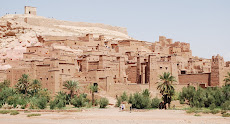


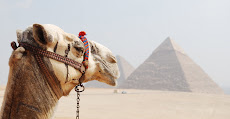


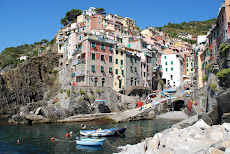
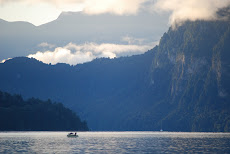













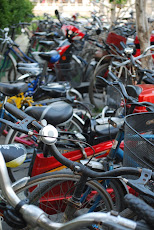
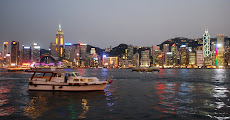
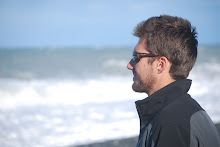
What a great adventure! And I LOVE the picture -- reminds me a bit of your "Sound of Music" picture in the Swiss Alps, but obviously a very different setting. Can't wait to hear more, and see more pictures! Love you both so much.....Mom
ReplyDelete"Into Thin Air" much? Great story man...keep it up.
ReplyDeleteWOW!!!! Casey, reading this I was worried aboput you but then I quickly remembered the adventerous person you are. I wish I shared this experience with you. Jeannie, good decsion getting your nails done.
ReplyDeleteIncredible blogs!!! Please keep them coming.
Joe
You're wonderfully insane Case. Sounds like a manicure was the right choice for Jean.
ReplyDelete